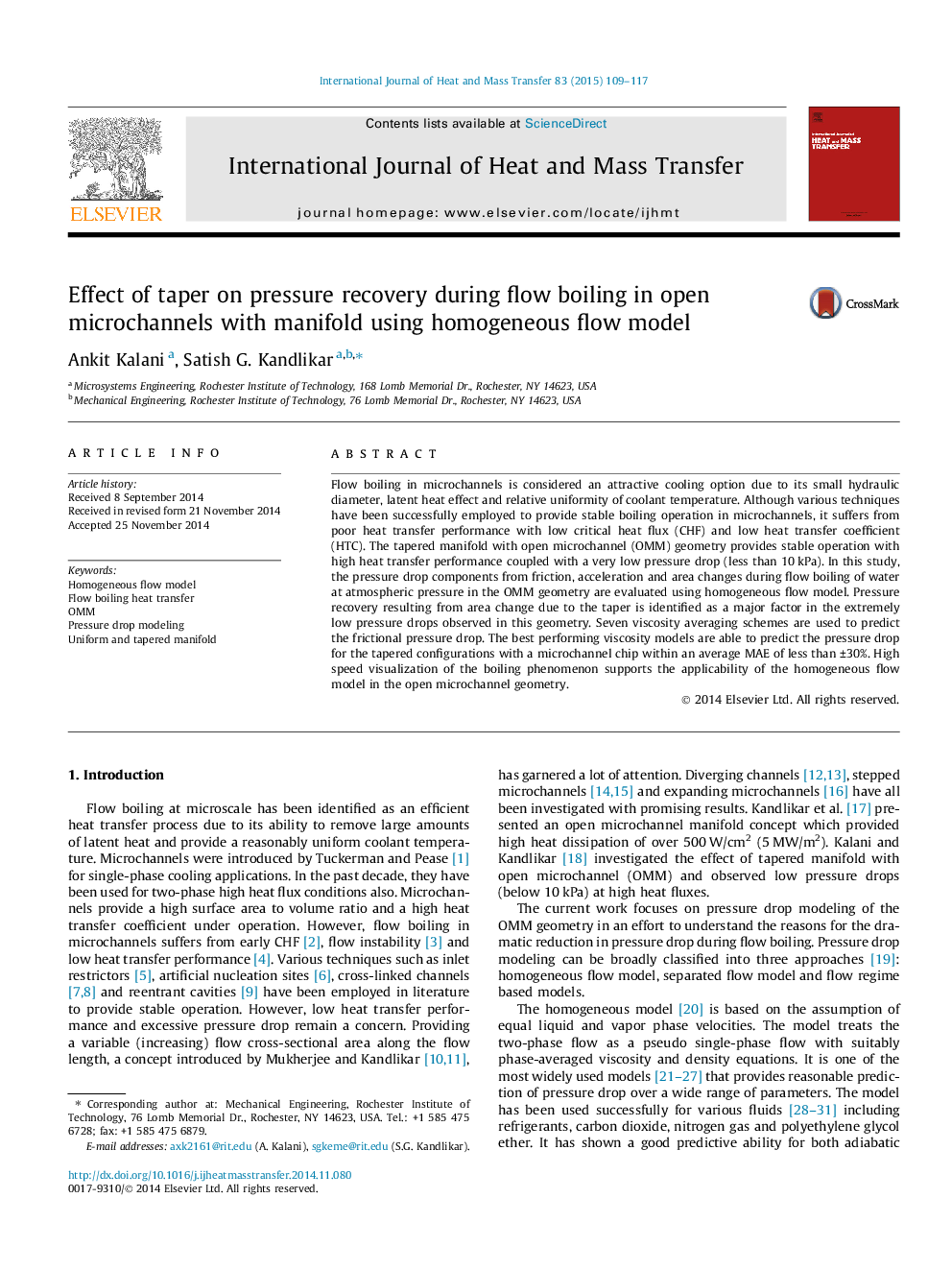| Article ID | Journal | Published Year | Pages | File Type |
|---|---|---|---|---|
| 657169 | International Journal of Heat and Mass Transfer | 2015 | 9 Pages |
Abstract
Flow boiling in microchannels is considered an attractive cooling option due to its small hydraulic diameter, latent heat effect and relative uniformity of coolant temperature. Although various techniques have been successfully employed to provide stable boiling operation in microchannels, it suffers from poor heat transfer performance with low critical heat flux (CHF) and low heat transfer coefficient (HTC). The tapered manifold with open microchannel (OMM) geometry provides stable operation with high heat transfer performance coupled with a very low pressure drop (less than 10 kPa). In this study, the pressure drop components from friction, acceleration and area changes during flow boiling of water at atmospheric pressure in the OMM geometry are evaluated using homogeneous flow model. Pressure recovery resulting from area change due to the taper is identified as a major factor in the extremely low pressure drops observed in this geometry. Seven viscosity averaging schemes are used to predict the frictional pressure drop. The best performing viscosity models are able to predict the pressure drop for the tapered configurations with a microchannel chip within an average MAE of less than ±30%. High speed visualization of the boiling phenomenon supports the applicability of the homogeneous flow model in the open microchannel geometry.
Related Topics
Physical Sciences and Engineering
Chemical Engineering
Fluid Flow and Transfer Processes
Authors
Ankit Kalani, Satish G. Kandlikar,
